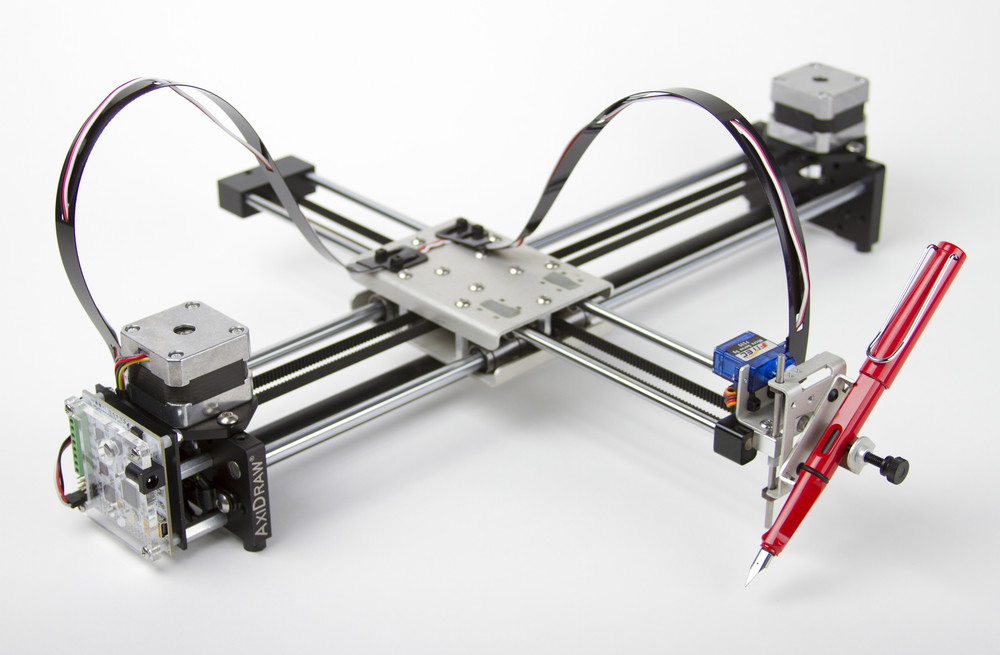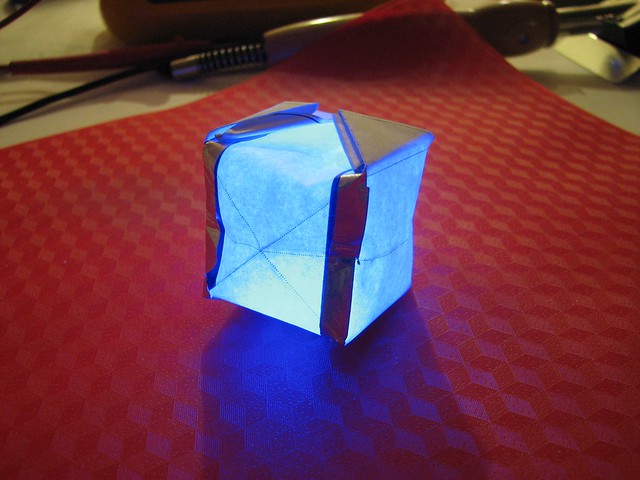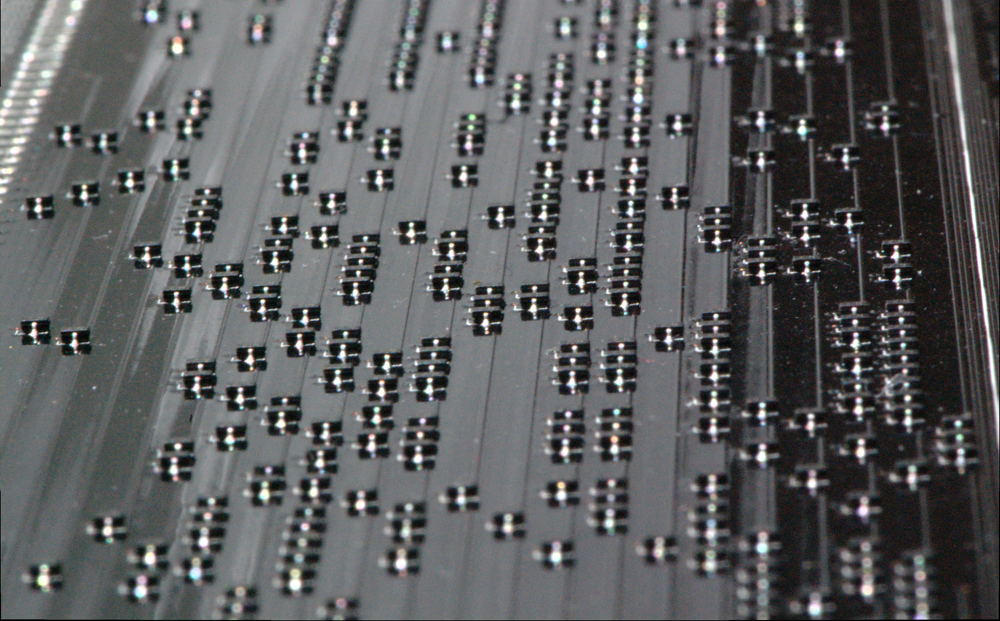We will be demonstrating the AxiDraw at Maker Faire New York this weekend, October 1-2. We’ll be in the Microchip booth in the Maker Pavilion.
Category Archives: Engineering
AxiDraw Experiments by Hansje van Halem
Hansje van Halem posted this video of clips of AxiDraw plotting a variety of designs using different types of pens and drawing media.
AxiDraw in the Wild
plotter vids as a service. pic.twitter.com/S0o0bUwe0s
— anders hoff (@inconvergent) July 21, 2016
We’re excited to see so many people sharing what they are doing with the AxiDraw. Here are a few examples we’ve found in places like twitter and instagram.
We’re going back to pen and paper with our logo, with a little help from the EvilMadScientist #Axidraw. A video posted by Spies & Assassins (@spiesassassins) on
Spies & Assassins have been trying out different writing implements.
NO/R has been trying materials like leather (above) and canvas.
#envelope #casualcalligraphy #axidraw #wedding #invitation #jimandpamforever A photo posted by Bonnie Kingdon (@penandletter) on
Bonnie Kingdon posted this elegantly addressed envelope.
Adam Sontag posted several marker drawings on foil.
#axidraw pen plotter + stipple gen + moon photos = #win (thx to @joanielemercier for the inspiration :) pic.twitter.com/HrfvS22HSs — Moritz Stefaner (@moritz_stefaner) July 9, 2016
Moritz Stefaner discovered StippleGen, our stippling program.

Miki is using AxiDraw to create custom packaging.
Keep all these great pictures and videos coming! We always enjoy seeing the creative ways people use our tools.
Paper Circuits roundup at MakerBlock
MakerBlock is exploring paper circuits, and has published a roundup of articles, including our Single Sided Circuit Board, Electric Origami, and Edge-Lit cards.
While I’m a big fan of paper and circuits, I’ve never really given paper circuits/circuitry a shot. Unfortunately, I have no good excuse for this. (Fair warning: I’ve been collecting links and ideas on this topic for several weeks now, and even though I intend to break up the post into more manageable chunks, I have a feeling this is going to be a doozy) …
Introducing the MOnSter 6502
Our collaborator Eric Schlaepfer has been extremely hard at work this year, designing a truly monstrous follow up to our giant-scale dis-integrated 555 and 741 circuits. This is the MOnSter 6502: a transistor-scale replica of the famous MOS 6502 microprocessor, the processor found at the heart of influential early computer systems such as the Apple ][ and the Commodore PET.
It is huge, at 12 × 15 inches, with over 4000 surface mount components, and 167 indicator LEDs added throughout so that you can see the flow of data.
This is a new project, still underway. We will be showing off the first prototype of the MOnSter 6502 at the Bay Area Maker Faire this coming weekend. We don’t promise that it will be completely working by then — this is a first stab at an extremely ambitious project — but we’re genuinely excited to show it off in this early stage.
You can read more about the MOnSter 6502 on its main project page, monster6502.com, and at Eric’s blog, tubetime.us.
(Before you ask, the MOnSter 6502 is not yet a kit or product that we’re selling. Right now, it’s an amazing thing that we’re trying to build. If you would like to stay in the loop as this project evolves, we’ve set up a special mailing list for updates.)
Bob’s Cylon
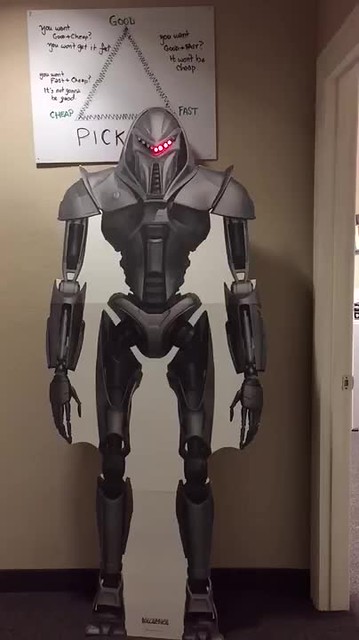
Bob M. shared this video of his project:
I used your Larson Scanner with 10 mm LEDs to put a little life into my Cylon “standee” which stands guard over my office. It has delighted everyone in the office (especially the IT Guys that work for me).
Circuit Classics

We’re very excited about the Circuit Classics PCBs and kits that Star Simpson is making based on Forrest Mims designs.
Each circuit depicts an original, traced and hand-drawn schematic created by Forrest Mims for his iconic books “Getting Started in Electronics”, and the “Engineers’ Notebook” series. Every board includes a description of how it works, in Mims’ handwriting, on the reverse side.
They look like a fantastic way to learn electronics. You can order them through her Crowd Supply campaign now.
2016 Hackaday Prize
We are once again excited to be helping judge the Hackaday Prize.
Now in its third year, the Hackaday Prize challenges the international community of designers and makers to address issues facing humanity through technology.
This year the prize is divided into five separate 5-week design challenges. The first one, Design Your Concept is ending on April 25th. It will be followed by Anything Goes, Citizen Scientist, Automation, and finally Assistive technologies, which ends on October 3rd.
20 projects will be chosen from each of the 5 rounds, and awarded $1000 per project. At the end of all 5 rounds, 100 projects in total will advance to the finals where 5 top prizes will be awarded: $150k, $25k, $10k, $10k and $5k. In addition the 1st place project will win a residency in the Supplyframe Design lab to develop their project further.
You can see the entries so far on hackaday.io. You can also head to a hackaday meetup in your community. We’ll be at the San Jose meetup on April 23rd, and hope to see you there!
From the mailbag: XL741 in the classroom
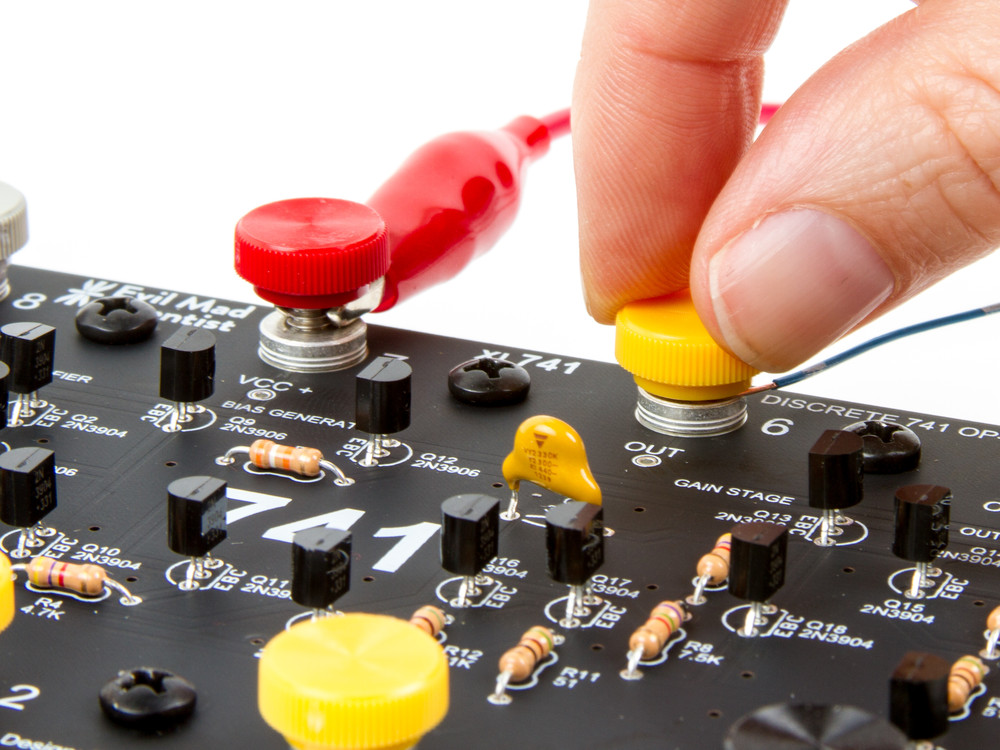
S.W. wrote in:
I just wanted to let you know that I am using your XL741 kit in my Electronics 2 class lab. It is a high quality kit and I thank you for putting it together. We build the 741 in stages, make measurements, adjust offsets, etc. It is a great vehicle to teach the analog building blocks. A student of mine (now graduated) and I wrote four lab exercises for it and they are being used now for the second time. We also just got to share them with several EE teachers who were also very enthusiastic about the idea.
We love to hear about how our kits get used!
Stroboscopic patterns for Easter eggs
Jiri Zemanek from Prague sent in this fabulous video of eggs decorated using the EggBot, some with markers, and some with the Electro-Kistka.
Various patterns are generated in Matlab using mathematical equations similar to ones describing Spirograph (or harmonograph) and Phyllotaxis. The patterns are calculated in such a way that when rotated under a stroboscopic light of suitable frequency or when recorded by a camera, they start to animate. It is kind of zoetrope— early device for animation. … Eggs are rotated at a constant speed, special for each pattern, by a brushless motor. No computer graphics tricks are used in the video.
Additional information is available at their site.




